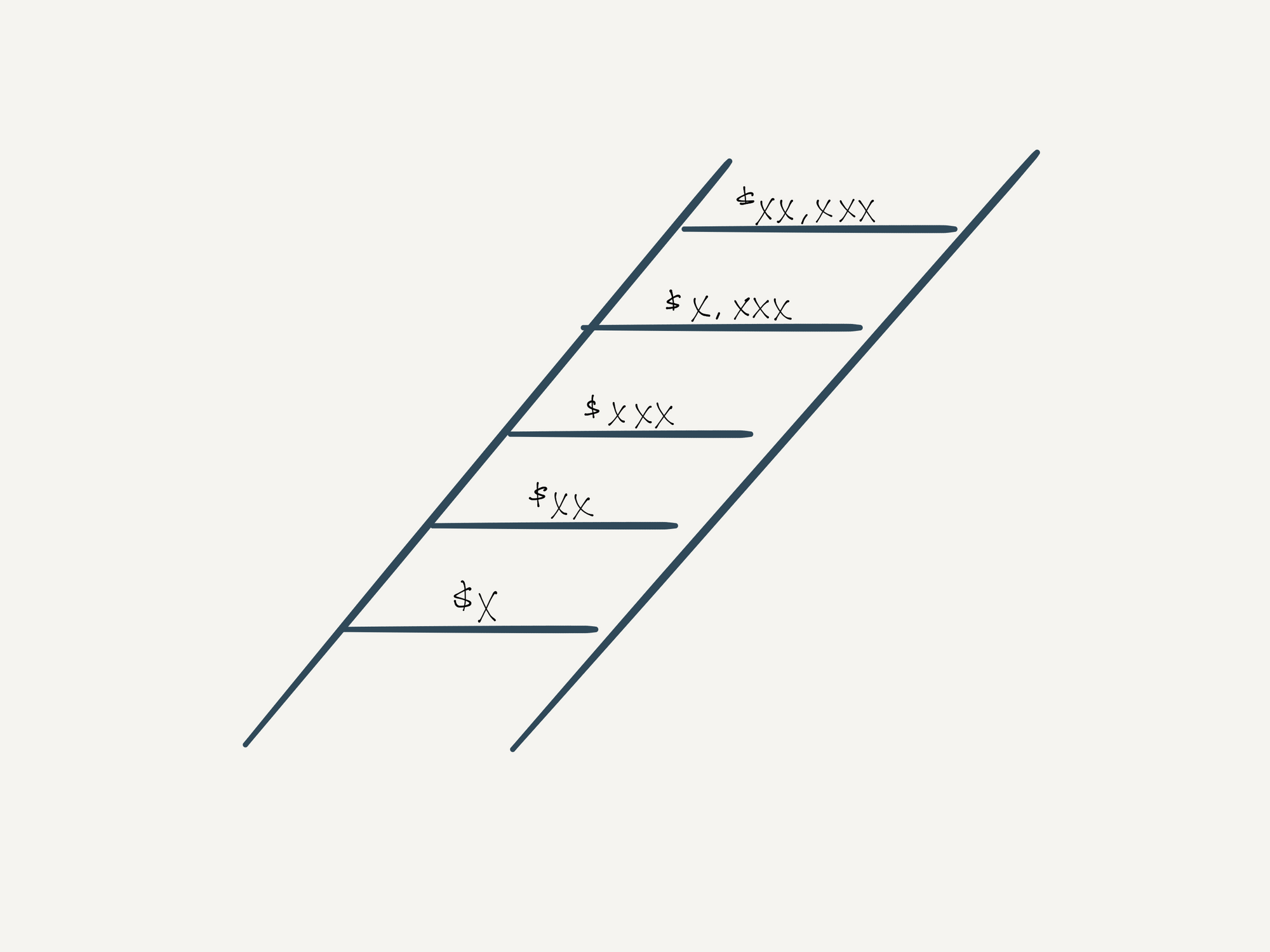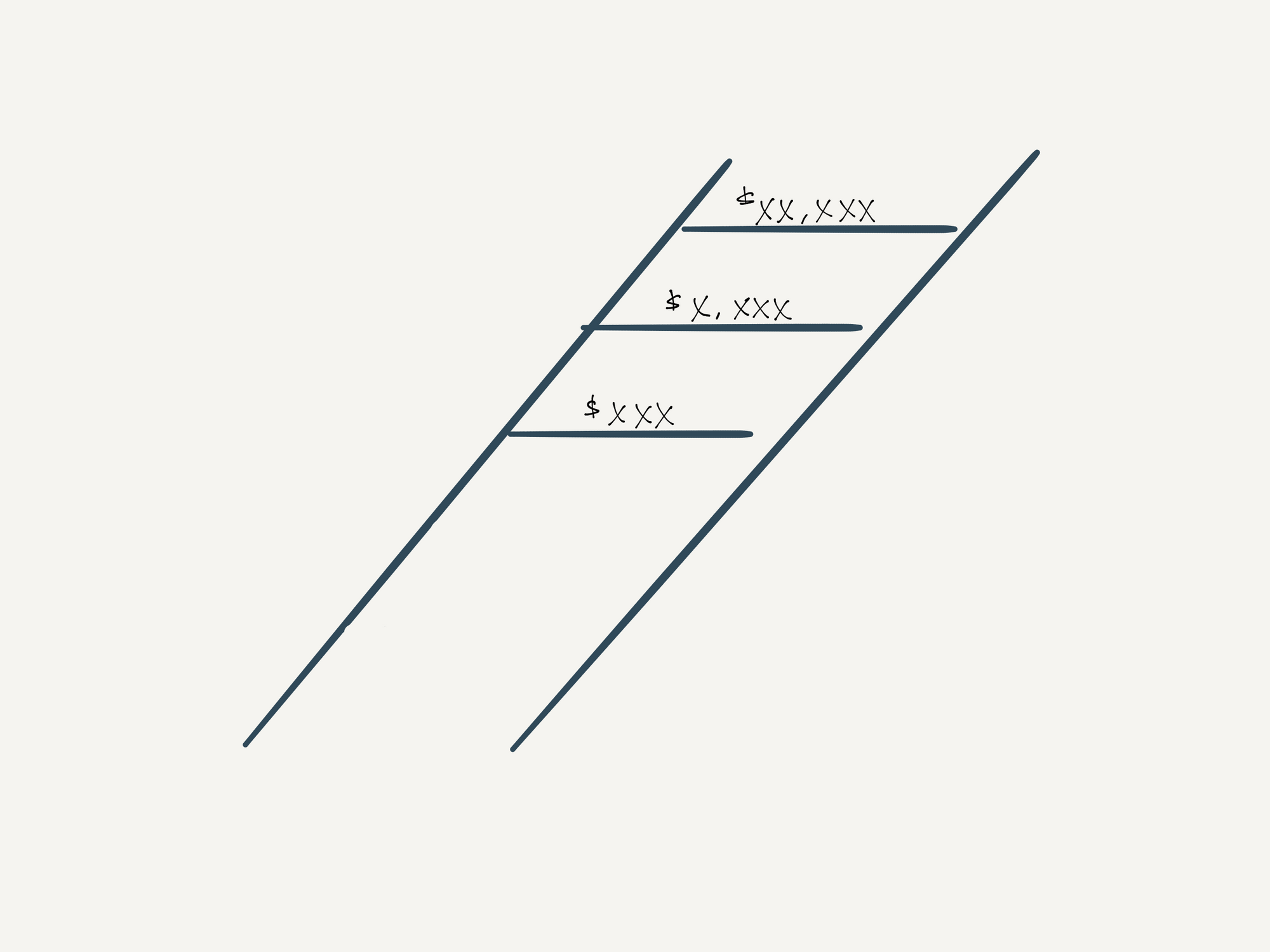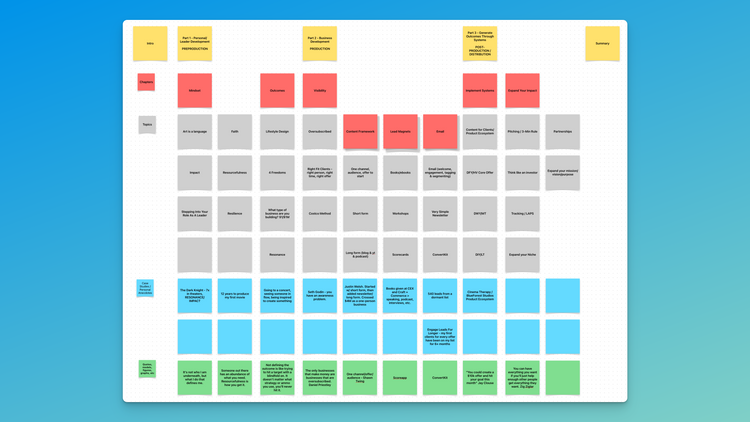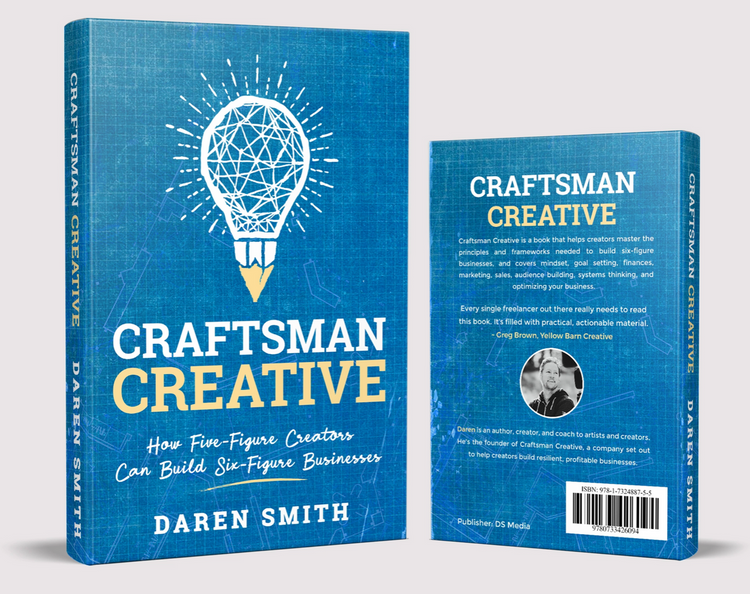The Sales Ladder

The big mindset shift in this book is to think of yourself as a business owner, not just an artist or creator.
One thing that sets businesses apart from individuals is that businesses have a suite of product and/or service offerings.
A graphic designer, for example, may only have one service offering - graphic design.
But Adobe has a suite of products at various price points, and, not coincidentally, is valued at billions of dollars.
One thing we can learn from how big businesses operate is the idea that they have multiple products and/or services that can reach different people depending on where they are in their journey.
Apple may be the easiest example. You can use some of their products for free - Apple Music, Apple Podcasts, their Safari internet browser, and more.
Then for just a few dollars a month you can subscribe to Apple music, or use their email and storage service iCloud, sign up for Apple TV+.
For a few hundred dollars you can buy devices like an iPad, iPhone, or Apple TV. You can buy accessories like the AirPods or an Apple Pencil.
For a few thousand dollars you can buy a laptop or desktop computer, or buy their servers or other high-end systems.
And you can invest hundreds of thousands, even millions, in their stock since they are a public company.
They have something for everyone, and truly understand the "job to be done" that these different products and offers satisfy for people.
Let's apply this to your creative business.
The Sales Ladder For Creators
The sales ladder looks a little like this:

To start, before you even step up to the first rung of the ladder, you've got your free content, your marketing and social media profiles and your email newsletter.
These are either free or can be had in exchange for entering one's email address in a form, like the one at the bottom right of the screen you're reading this on (unless you've already subscribed, in which case, thank you!)
Most creators make the mistake of skipping the first two rungs of the ladder and go straight for the third or fourth rung.
They charge $XXX per hour or $X,XXX per project, which is great for when they can land that work, but they leave a lot of money on the table and make it harder for those "free" people to reach that next rung in the ladder.

It just doesn't work very well.
The first and second rungs of the ladder are low-cost ways for people to go from follower or subscriber to customer.
A $7 ebook. A $1.99 purchase of a song. A $3/month donation on Patreon.
This changes the dynamic of the relationship, because now people aren't just receiving value for free, they're trusting you with an, albeit small, job to be done.
They become a customer.
Next is the second rung of the sales ladder, your $XX product offering. This could be a higher-priced ebook, a $20/month paid newsletter, a $49-99 course, a $29 webinar, the options are infinite.
Think of what you'd pay $10-99 to your favorite creators for. What "job" would you hire them for at that price?
Ask your existing audience what they would want for that price, or go into your messages and conversations with your audience to see what they've been asking you for that you could create and price on that second rung.
If you charge $10-99 per hour for your work you can put that on this rung as well, but realize that not every one of your followers or subscribers needs to hire you as a client yet, so think about creating products at this rung, not just services. This will allow you to reach more people and convert them into customers.
The third rung you may already be familiar with. This is the bread and butter rung for most professional creatives who charge $100+ per hour for their time.
Photographers who charge $400 for a photo session. Musicians who get $250 a night for a gig. Filmmakers who get $300 a day for working on set.
But this could also be a course that you charge more for - $129 or $249 or $495 or even $997.
It could be a piece of art that you sell for hundreds of dollars.
Having a good mix of services and products at this level will, by itself, help you create a six-figure business.
Most five-figure creators are working 10-20 days a month and get around $400/day for their time. That works out to $48,000-96,000 per year.
So you'd only need $4,000 to $52,000 worth of products on top of that service income to reach the six-figure mark.
A $199 product that you sell one per day of is $72,635. A $149 course, a $500 piece of art, an annual subscription to your newsletter or community for $100 a year.
It doesn't take much, and you can look at the gap between what you currently make and the $100,000 mark and divide by the $XXX price of your product to see how many you'd need to sell:
$100,000 - $75,000 = $25,000
$25,000 ÷ $129 = 193.78, or just under 200 courses, or webinars, or photographs, or graphic design packs, or anything else you want to create and sell for that price.
Up until 2019 all of my income was generated on the third rung of the ladder.
I charged $100-250 per hour for my time, depending on if I was producing, consulting, or who the client was.
I was making just over six figures a year through 2018 and 2019. It wasn't until December of that year that I finally cracked the idea for Craftsman Creative, and set out to build that product.
By the summer of 2020 I had produced half a dozen courses and crossed $15,000 in product income, of which I got 30% of.
So that new product income was bringing in over $1,500 a month, and has grown since as I've added new courses each month. (We're now up to 16 courses on the site!)
Since that time and learning the power of having products and services at multiple price points, I've added more and more to my own sales ladder. This book will ultimately be self-published and sold for $20, or likely ~$9 on Amazon (rungs 1-2). When I launch it there will be a community for those who want to build six-figure businesses which will start at $199 per year or $20/month (rungs 2-3). I also have a consulting practice where I come in as a "creative COO" for businesses trying to scale to seven figures, which I charge $X,XXX per month for, as well as creative results coaching for $1,000 per month.
Beyond that, my producing fees have moved from rungs 3-4 ($100 per hour or $1,000 per day) to a flat fee, which brings us to rung 5 of the ladder, the $XX,XXX offer for a product or service.
Now, as a percentage of my audience, there are only two or three people that hire me every year at that rung 5 price.
If that's all I had, I would still have a six figure business. But, I'd be excluding everyone who wants to work with me at rungs 1-4 from ever becoming a customer or a client.
There's nothing inherently wrong with this approach, but it can take a decade or more to get to the point where you can charge $XX,XXX for a project.
So the way to build a resilient, diversified six-figure creative business is to look at the sales ladder and try and create a product or service that satisfies the "jobs to be done" of your audience at each level.
Create a free entry point like a newsletter or free community.
Then create products in the $X and $XX ranges.
Add products as well as services at the $XXX rung 3 level.
And expand up to include people who want to hire you for $X,XXX and $XX,XXX jobs.
Don't just limit yourself to one rung, or think that you can't ever reach rungs 4 or 5. You may only get one or two people per year hiring you at that level, but as your audience grows and evolves, more and more people will become customers and more will want to work with you at those higher levels.
Early access to the book is now available. Learn more here.
NEXT CHAPTER >

< PREVIOUS CHAPTER








Member discussion